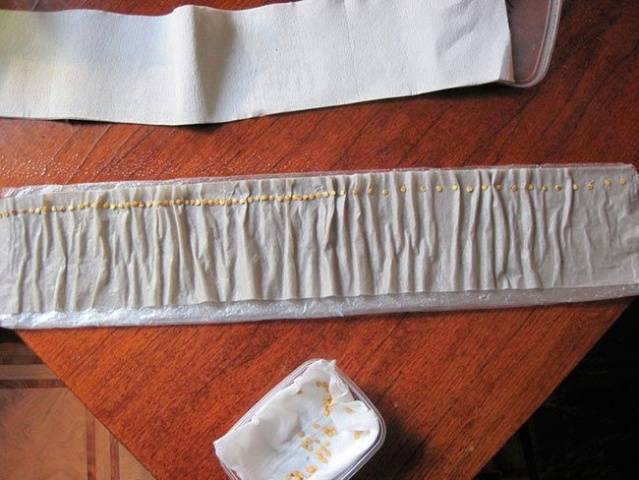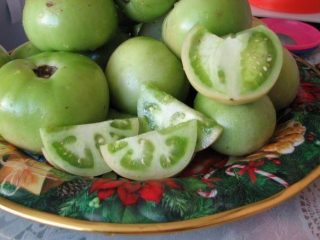Content
Every year, when starting to grow seedlings, gardeners are upset that there is not enough space on the windowsills. Pots take up a lot of space. And I want to plant so much! Today this problem can be easily solved thanks to new methods growing tomato seedlings in the snail and diaper. Comfortable, spacious, easy!
By growing tomato seedlings using similar methods, you save not only useful space, but also money. There is no need to purchase large quantities of soil, prepare containers and other containers for growing tomato seedlings. One snail places several plants in its coil. It is especially convenient to grow plant seedlings with small seeds using the snail method.
Advantages of a snail made from a substrate
It is not known for certain who was the first to grow tomato seedlings from seeds in a snail. It’s just that each gardener contributed something of his own, interesting, and as a result the method was made public for wide use. Today it is popular throughout Russia. Most often, when growing seedlings, a laminate is used as a substrate.
Why choose:
- Making a snail is not difficult; any available materials will do.If desired, you can purchase ready-made snail elements.
- The space savings are real.
- During picking, the roots are not damaged, the survival rate is high.
- Interesting! You can grow tomato seedlings with or without soil.
Step-by-step making of a snail with soil
Gardeners have already tried the innovation, although there are no concrete results or conclusions yet: the method is being tested. To make a snail, you need to prepare:
- substrate;
- soil or toilet paper;
- a transparent container, ice cream and mayonnaise buckets will do;
- rubber bands used to tie money;
- plastic bag.
The substrate is laid out on the work table. Cut a strip of the required length - no more than 15 cm. The width should be equal to the size of the paper. Moistened soil is poured onto the tape in a thin layer. There is no need to fill the entire length of the substrate, so as not to complicate the rolling later on.
The soil is irrigated with a spray bottle and compacted a little. Turning the top of the substrate towards you, lay out the tomato seeds. You need to step back 2 cm from the edge. The step between the seeds is 2-3 cm. You can work with your fingers or tweezers, as you prefer. As we progress, we add and moisten the soil, continuing to lay the seeds.
When the surface is full, we begin to roll, but not tightly, so that there is space between the layers. The result is a figure resembling a snail in shape. Hence the name. Don't be upset if some of the soil spills out from below. After completing the folding, soil will still have to be added. To prevent the snail from falling apart, secure it with a money rubber band.
After this, install the “nursery” in a transparent container.Water is poured to the bottom, and soil is added to the snail itself, which needs to be shed thoroughly, being careful. It is convenient to insert a sticker with the name of the variety under the elastic band. A plastic bag is pulled over the top and secured.
Growing in a snail without soil
To obtain tomato seedlings, soil is not always added to the snail. To make a snail you will need the same materials. One difference is that the soil is not added.
Operating rules:
- First, prepare a tape from the backing and toilet paper. The length will be greater than when planting with soil.
- The paper is well moistened with warm water and hydrogen peroxide. You can use the one in which the eggs were boiled. This is a natural biostimulant. Then the tomato seeds are laid out at a distance from the edge. The step between each seed is at least three centimeters. If seeds of different varieties are sown, they are separated with toothpicks.
You need to twist it carefully and not too tightly. An elastic band for money is used as fastening. Place the snail in the jar and add about 1-2 cm of water so that the toilet paper is always wet. On top is a transparent bag. Cultivation continues in sunny window. This method requires adding fertilizer to the water.
Tomato seedlings in a snail, grown without soil, are presented in the video:
Why is snail sowing popular?
This is not the first time that many gardeners have used snails to produce seedlings of not only tomatoes, but also other vegetable crops.In addition to saving window sill space, such a container can be easily transported to the dacha for planting seedlings in a permanent place.
There are clear advantages of the method:
- Lighting is distributed evenly between each plant. After all, a snail is easier to unfold than a large box.
- There is no need to prepare a large amount of soil in the fall at your summer cottage. But here a serious problem arises: there is nowhere to store it in the city. Ready-made soil composition is not that cheap.
- Cellophane substrates can be reused many times; you just need to wash them in soapy water, disinfect them, and dry them.
- The root system develops well in the snail, It’s more convenient to pick seedlings, since there is practically no damage to the roots.
The only note: you should not rush into picking. You need to wait until the roots gain strength and a sufficient number of leaves appear. They continue to grow tomato seedlings using diapers. Already interested?
Methods for “diaper” growing seeds
So, the tomato seedlings are ready: with the snail method of growing tomatoes from seeds, the root system is strong and there are enough leaves. All that remains is to choose which containers to transplant the grown plants into:
- Traditionally: cups, milk and ice cream containers, bags.
- In a new way - in diapers.
The traditional method of growing tomato seedlings will hardly surprise anyone. But swaddling is not entirely familiar to the ear. It turns out that you can swaddle not only small children, but also some vegetable plants. Let's try to figure it out.
With this method of growing tomato seedlings, the diaper will be the usual thick film that covers greenhouses.You can take pieces of already used covering material: this will not play a special role. It needs to be cut in a certain way: we trace the notebook sheet - the diaper is ready.
- Sprinkle spoonfuls of two moist soil onto one diaper rectangle (upper left corner). We carefully unwrap the snail. If the seedlings grew with soil, separate one plant and transfer it to a new container. If the seedlings have grown without soil, cut off a piece of paper, trying not to damage the clearly visible roots. Planting with paper. Sprinkle soil on top of the plant again. When laid, the cotyledons should be slightly above the edge of the diaper.
- It is not difficult for women to cope with wrapping seedlings. The picture shows that the swaddling process is no different from how a baby is wrapped. Fold from below and twist along the entire length of the film. For fixation, we use two rubber bands. Do not forget to add soil at the same level as the edge of the film, and pour plenty of water at room temperature.
- To avoid confusion when replanting, the name of the variety can be glued directly to the diaper.
You can dive into paper diapers. Details in the video:
Convenience of growing seedlings in diapers
Plants transplanted using the diaper method occupy a minimal area on the window. Tomato seedlings need to be turned every day to avoid distortion, along with the container. The root system turns out to be powerful.
Let's sum it up
Our grandmothers tried to use film or newsprint and sewed cups for transplanting tomatoes from these materials. But they were bulky. Snail and diaper methods of growing tomatoes are economical in this regard.After all, they save useful window area for placing other plantings. Moreover, gardeners save money on purchasing containers for transplanting seedlings and a large amount of land.
Snail or diaper methods of growing seedlings, relatively young ones. Plant lovers are still adjusting to them. But we can say with confidence that the methods will take root. The most important thing is that planting seedlings from snails and diapers is easy.













